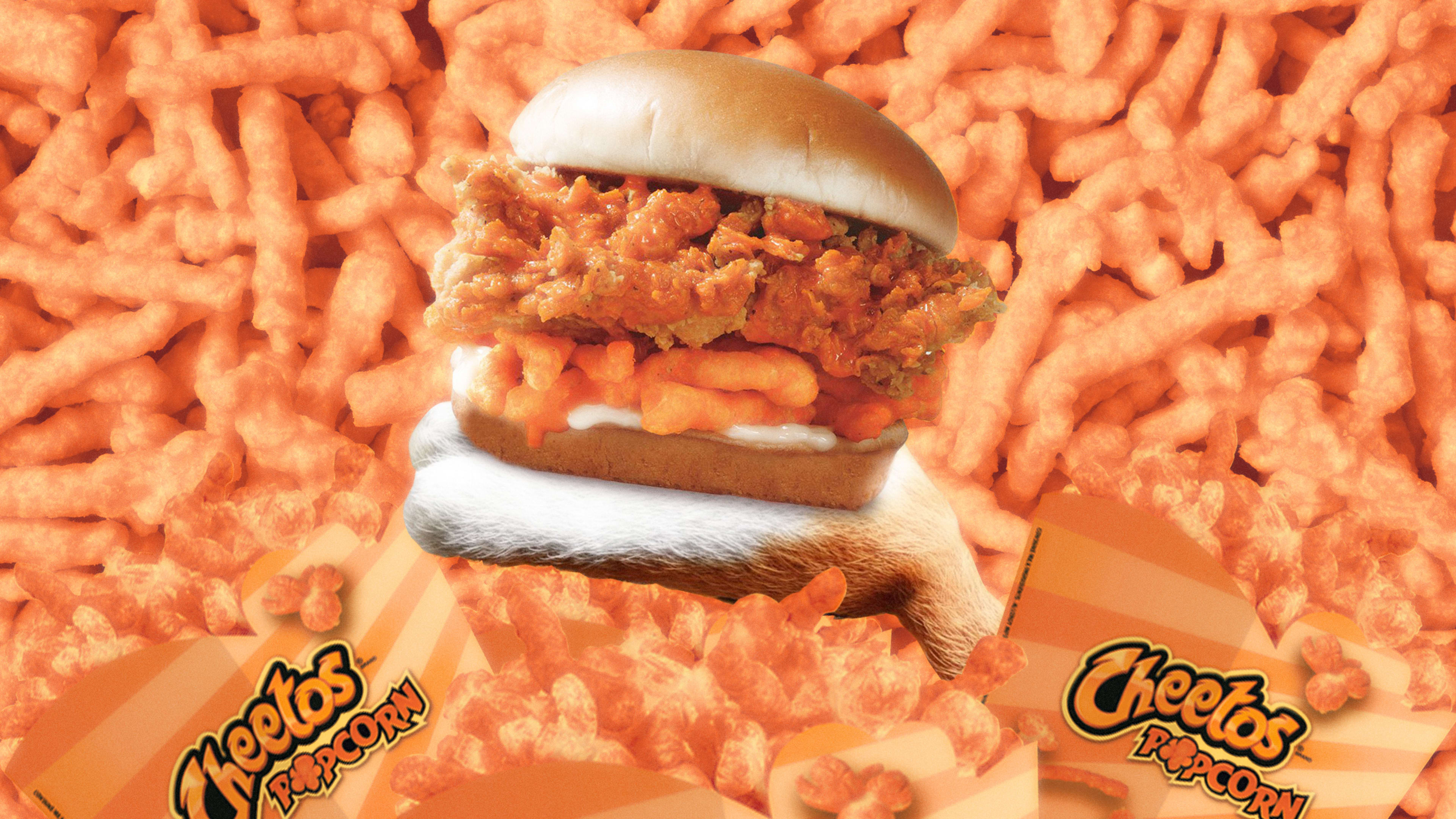Henceforth, there will be two great eras in the history of the food industry: pre-Doritos Locos Taco and the post-Doritos Locos Taco.
With that one menu item, which debuted in 2012, the fast-food industry joined forces with the processed food industry to create a crossover sensation that would become a model for the industry. It was the result of three years of development by the $49 billion giant Yum Brands (which owns Taco Bell) and the $64 billion titan PepsiCo (which owns Doritos), which produced a cobranded taco that was exponentially more appealing than the sum of its parts. The dull hard shell taco transcended to a glowing orange experience, zinging your tongue with sharp nacho flavors, and dusting your fingers with the evidence once you were done.
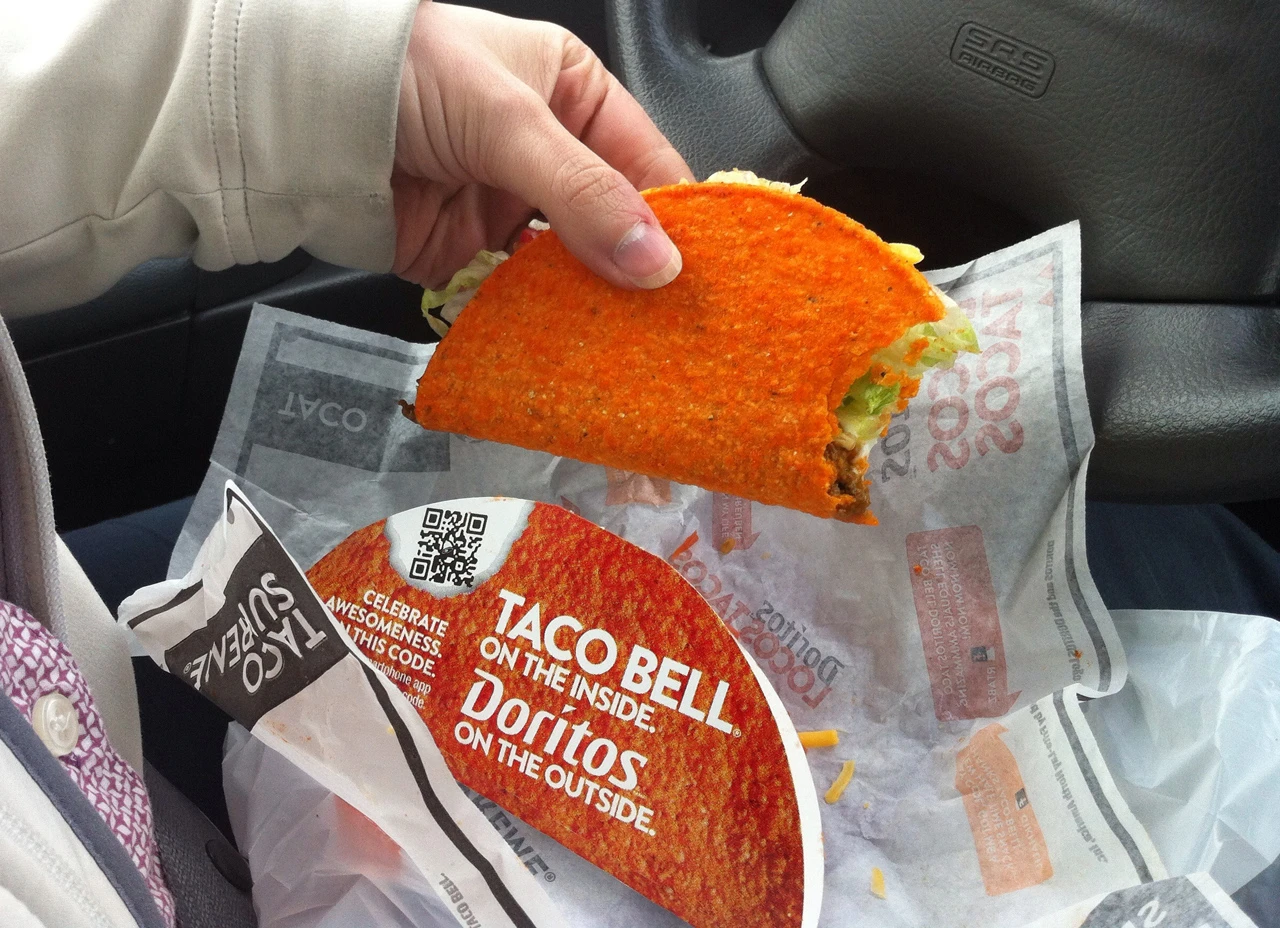

In the seven years since the fateful taco launched, PepsiCo has built a team of marketers who, working closely with chefs and food scientists, are dedicated to inventing the next sensational crossover menu item. Their work focuses on turning components from the company’s massive portfolio of Frito-Lay snack food brands (ranging from Ruffles chips to Cheetos dust) into tasty, absurdist spectacles that are only available in stadiums, movie theaters, and quick-service restaurants. It may seem surprising that a marketing department is leading menu innovations. In fact, such a setup is fairly typical in the food industry; marketers lead menu development at chains like Arby’s and Taco Bell today.
One woman is responsible for leading this new era of viral food: Dena vonWerssowetz.
Under her leadership since July 2018, the team at PepsiCo has developed viral sensations including the Cheetos Chicken Sandwich at KFC (a fried chicken sandwich dipped in a Cheetos sauce that was met with rave reviews) and Cheetos Popcorn at Regal Cinema (a cheese-dusted popcorn with some Cheetos mixed in for extra crunch, that is now a permanent mainstay on their menu). When we last spoke, she hinted at developing a series of new concepts involving Frito-Lay (which is owned by PepsiCo) for Little Caesars, one of which could make it to market as soon as next year.
Look at her portfolio, and vonWerssowetz is clearly cheese-obsessed. But her insight–that the Frito-Lay brand is synonymous with cheese—is largely born from research, she says.
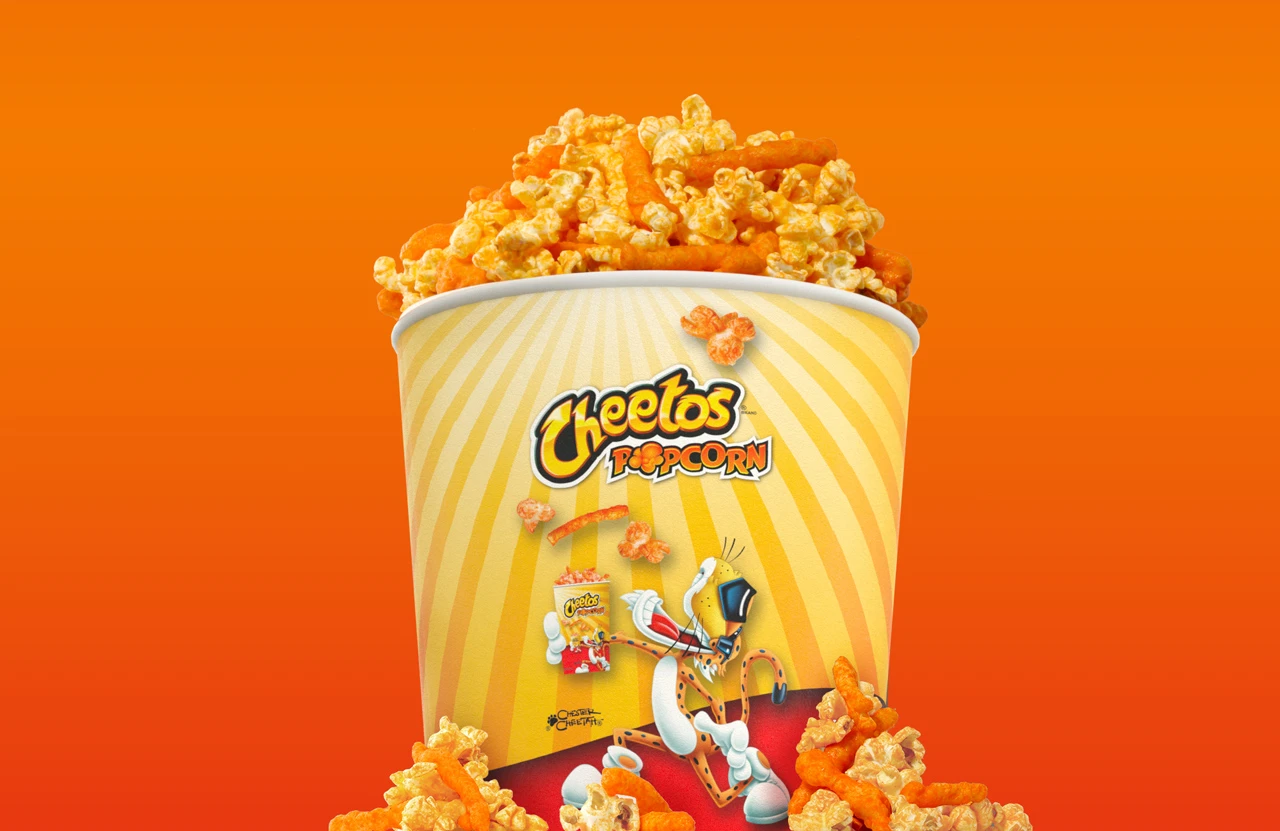
“So we’ve gone through a lot of research to identify, one, where can our brand stretch, what are things on menus that consumers can make that leap with?” says vonWerssowetz. “And one of those things, I’ll use Cheetos as an example. You said, ‘Oh, you started to use Cheetos a lot.’ We have, because when we ask consumers what they think about when they think about Cheetos . . . they think of ‘cheese.’ And when you think of menu items and innovation, wow, Cheetos cheese! Where does cheese play on a menu? A lot of places!”
In her armament are a slew of brands that are more recognizable than cheddar or provolone ever were. Her team is constantly searching for places to apply its cheese IP. Some opportunities are born from simple insights like, “what is the best-selling snack at a movie theater? Popcorn. Maybe we should get Cheetos on some popcorn!” Others are born from conversations with quick-service restaurants (aka fast food) looking to add some pizazz to a product line, and maybe attract a younger customer while they’re at it. When KFC wanted more attention on its chicken sandwich line, Cheetos cheese was just the way in; a vast majority of Cheetos sales are to people under the age of 30, a coveted demographic for just about any business.
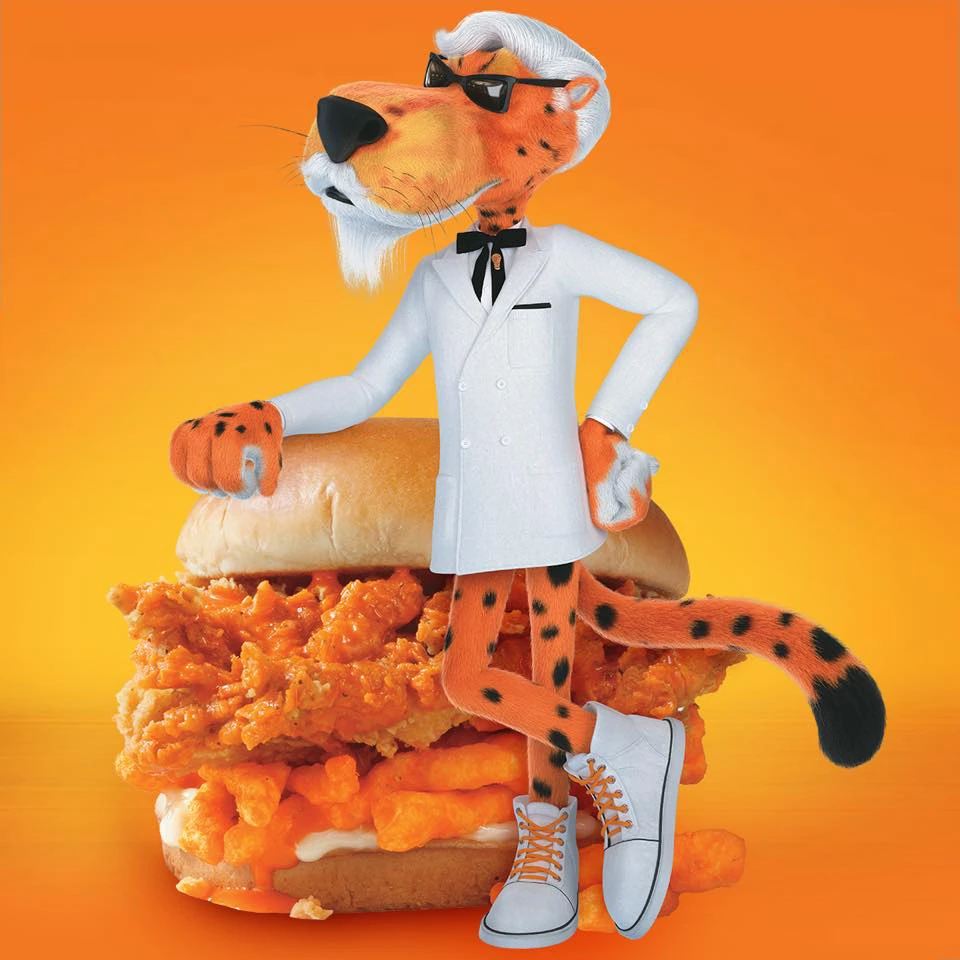
Typically, a major brand like KFC or Sonic will approach PepsiCo about a potential new menu item, but PepsiCo sometimes initiates partnerships instead. At that point, vonWerssowetz’s own test kitchen gets to work on experiments. Depending on the partner, these might be co-created in both PepsiCo’s and the partner’s kitchens—and yes, vonWerssowetz tastes all of the ideas.
“For every one that’s out there that we think is a home run, there’s probably a 100 I’ve tried that we had to work on,” says vonWerssowetz. “We’re working on something for KFC that will come out in test markets soon and . . . I got goosebumps when I tried it. I immediately knew it was a home run.”
So, how does she really know? One important criteria is taste. Not just is it good, but does it taste like the brand. Does a Cheetos Chicken Sandwich actually remind you of a Cheetos puff? Does a Doritos Locos Taco have the recognizable flavor of a bag of Doritos?
“I was just in the kitchen last week, and I was trying some milkshakes for a partner. And it was maybe one of the best milkshakes I’d ever had, but our product, the brand we were using, just didn’t stand up in that menu item. It wasn’t a strong enough flavor with the rest of the ingredients in that milkshake, and I had to pull it,” she says. “We were about to go work with them, show them the menu items, and I couldn’t sign off on it because our brand wasn’t distinctive in that menu item.”
It’s easy to understand why this tough love is necessary. If a consumer doesn’t taste that partner brand in a new menu item, the food won’t live up to their expectations. It makes both companies look bad. And presumably, both the restaurant and PepsiCo lose money by rolling out an item that no one really wants to go try.
Another thing her team will often tweak is how loud or hyperbolic the partner brand tastes in a particular collaboration. Fritos, for instance, have made their way onto Sonic and Taco Bell-partnered menu items as a simple core component of the dish. And that’s because the three-ingredient item—oil, salt, corn—is mild enough it fits anywhere and you won’t get sick of it.
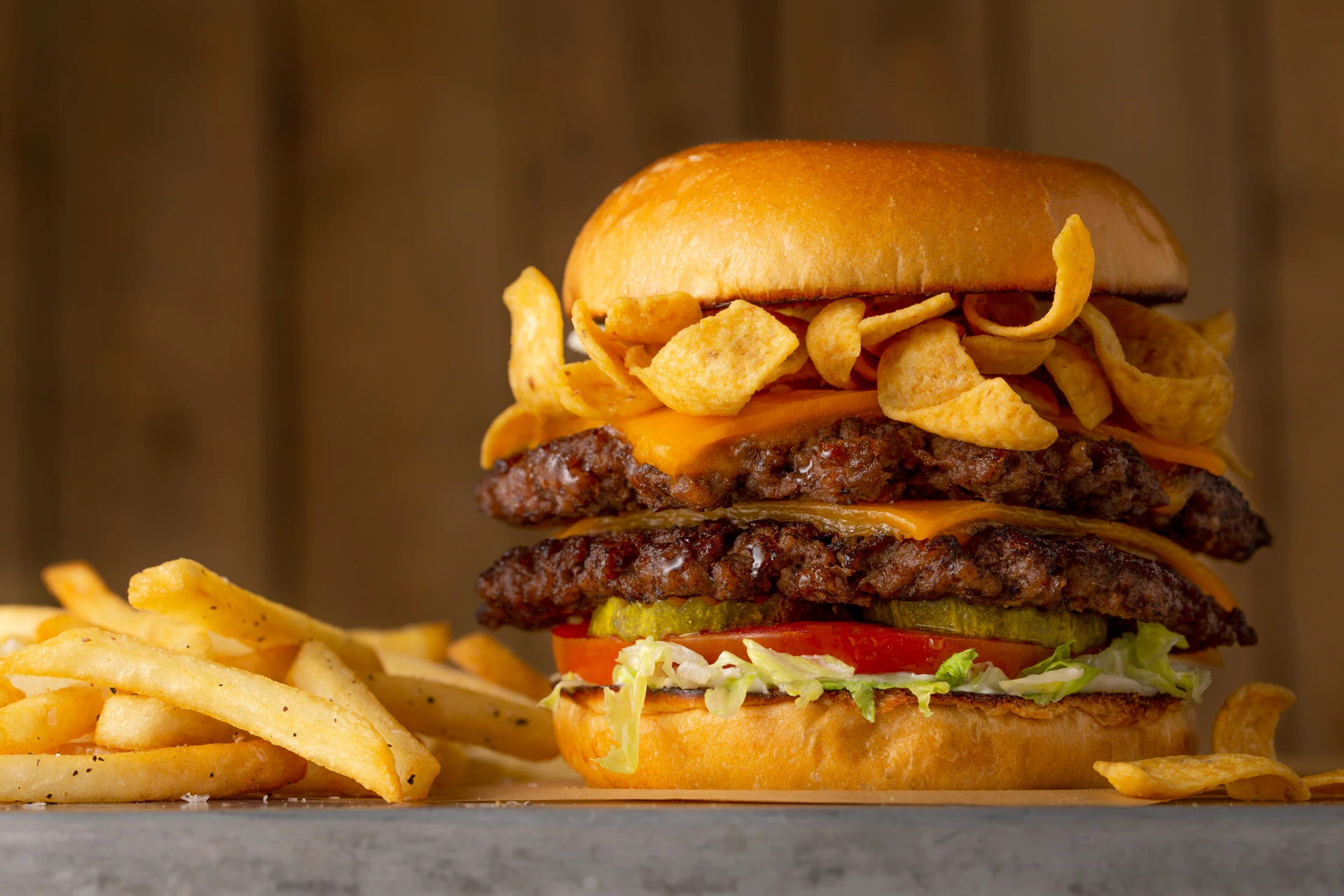
“It depends on who you are working with and what you’re trying to do. Am I trying to create buzz and excitement? Is it an in-and-out for a customer, like the KFC item, that’s a one-month product? Or is it a product, like for Regal, where it’s ongoing?” says vonWerssowetz. “Because I think you approach those two things very differently. Consumers may only go once or twice for the chicken sandwich with Cheetos sauce on it.”
Finding this balance can be trickier than it sounds. Take one project vonWerssowetz’s group has been working on for some time: a Cheetos mozzarella stick. What your mind imagines when you hear those words could be the sort of tongue-burning novelty that’s fun to try once, or the kind of unctuous thing you’d crave several times a year for the foreseeable future.

When her team has a few leads in-hand for new menu items—maybe nothing finalized, but some good hunches—they’ll literally start sketching up ideas, which they dub “concept screeners.”
A screener is just a drawing of a food and a short description. These will often be shared with corporate execs, but also, more importantly, tested with consumers to gauge their response. Do these items sound and look enticing?
“From that we get insight on what resonates, but you can get quick learnings in less than a week, which ones sound better, look better,” says vonWerssowetz. “Once you have the top scoring item, you bring consumers in to try those items.” When something scores well, it’s tested in a few dozen trial stores.
“You want to make sure it will do well in different areas of the country.” says vonWerssowetz.
The consumer response is important, but the team puts a lot of weight on how employees at these restaurants react, too. “Are they willing to spend their own dollars on that item? Are they willing to pay for it, and how do they like the item?”
[Photo: Cheetos]
If everything goes well in testing, another four to six months of marketing preparation goes into the national launch, while PepsiCo and the partner finalize the logistics of mass-producing the item at scale. PepsiCo provides the key components, like the Cheetos sauce for KFC, but sometimes it does more. For Regal Cinemas, it provided the new machinery to prep and display Cheetos popcorn. Training and instructions are involved, too. Even though PespsiCo doesn’t break out the revenue from these partnerships, the business model is simple to understand: PepsiCo provides all this R&D and shares its trademarks in order to sell the dips, sauces, and chips to its partner restaurants.
All in all, about a year of work goes into taking a menu item from concept to market, though that can be faster, or slower, depending on the validation the partner is after. But given the near ubiquity of PepsiCo products on menus across the U.S., and the insatiable appetite that food companies have for the next viral product to conquer social media, the trend of hyperbolic, cross-branded foods shows no signs of slowing down—and seems only to be limited by one’s imagination of where Doritos nacho cheese or Cheetos cheese flavoring could make its way next.
“Are you the strongest brand in cheese?” I muse aloud.
“We’re working on it,” says vonWerssowetz.
Recognize your brand’s excellence by applying to this year’s Brands That Matter Awards before the early-rate deadline, May 3.
